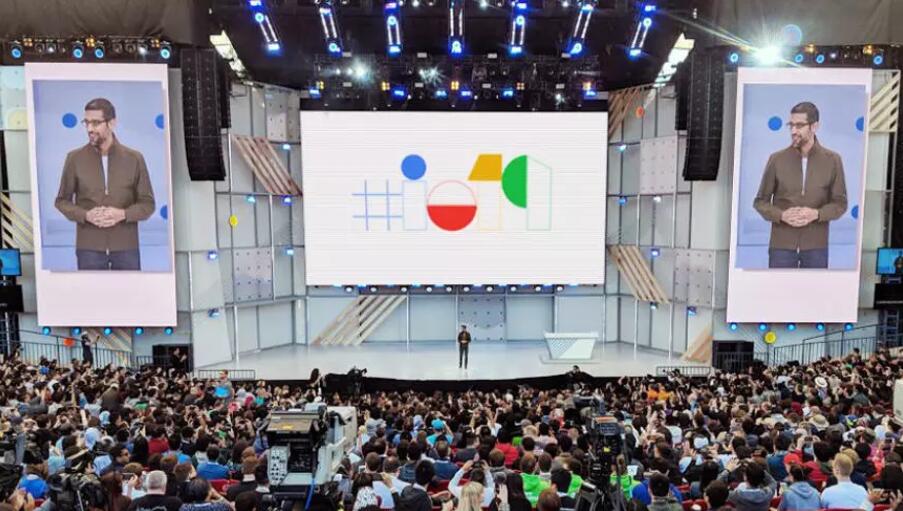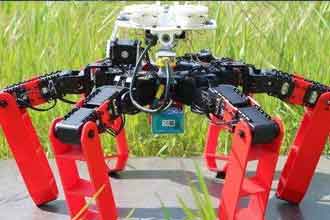On the morning of May 7, Google hosted the 11th Google I/O 2019 developer conference after Facebook and Microsoft developer conference.
The 3-day event was held in The same venue, The Shoreline Amphitheatre in mountain view.
Despite a rough year for Google, which Sundar Pichai, Google's chief executive, called "Google's most turbulent ever", the event attracted about 30,000 attendees from around the world, a sign of Google's appeal to developers.

This makes this year's Google I/O developers conference particularly critical, Google can win back the hearts of the majority of developers, it depends on today!
In this conference, Google's two hardware lineup Pixel, Nest group update, in addition, Google brought the latest Android system Android Q, AI is the conference is the leading actor.Highlights include:
1. Release the mid-range Pixel 3a (from $399) and Pixel 3a XL (from $479).

2. Launch the Nest Hub Max, a 10-inch screen smart speaker with a camera, and add a face-matching feature for $229. The Nest Hub is reduced to $149.
3. Launch the new Android mobile operating system Android Q: add dark theme and focus mode.
4. Launch a new generation of Google Assistant, which reduces its voice recognition mode from hundreds of GB to half a gigabyte, making it small enough for mobile phones.
5. Google Assistant will be built into Waze, which can wake up the driving mode and process everything with voice.
6. Google search adds 3D camera and AR function, and 3D model can be placed in the real world through search.
7. Google Lens is updated to add new voice features, with an ultra-low threshold.
8, features Live Caption that automatically generates subtitles for audio or video on the phone in real time, as well as a means to text the call in real time.
9. Google map will launch AR mode to guide users in street view.
(10) Duplex on the web is proposed.
11, will add stealth mode to Google maps and Youtube.
Release the Euphonia project to study how to improve its AI speech algorithm to help patients with speech impairment communicate effectively.
In addition, the day before the conference, Google unveiled a new design for the car operating system Android Auto, adding a dark theme and allowing users to access multiple apps on the same screen.
1. AI is still the theme: 8 new features are introduced in the opening
Without exception, Google CEO Sundar Pichai was the first to come on stage and said humorously: "today in addition to the I/O conference, there is a barca game against Liverpool worth watching.
In recent years, updates to AI technologies and applications have become a staple of the developer conferences of major technology companies.
Back at the I/O conference in 2016, Google unveiled its new strategy of "Mobile first to AI first".
For the next two or three hours of the opening speech, AI was almost always present.
1. Google search: integrate 3D camera and AR
Google has announced the integration of augmented reality (AR) into Google search. Simply type in what you want to search in the search box, and the relevant object will be put into the real scene through 3D camera and AR technology.
For example, you can point a camera at the street and get a message, and the phone will tell you where to buy food and where to get in.
Pichai said the goal of Google was to serve people better.He first showed the search capability of Google News. After searching for "black holes", Google used machine learning to recommend News and could see a timeline showing how black holes were discovered.
You can also search for podcasts that you want. Just like you search for photos or articles, these podcasts can be stored and listened to later.
In addition, Google combines 3D cameras, AR and search.
For example, search for "muscle model" or a pair of shoes, and you can display the model or shoes on the desktop with 3D cameras and AR technology, and even compare them with the real thing.Also, if you search for great white sharks, you can put great white sharks in real situations.
Google Lens adds a new voice feature, and the $35 phone works
Google Lens, Google's new visual search tool, also has new features.
A more down-to-earth example is when you're eating in a restaurant, you can use Google Lens to automatically recognize menus, highlight the most popular dishes, and evaluate them on a Google Map.
You can also through the picture of the food, you can directly search the food practice, which is a big welfare for the majority of foodies.
Even smarter, Google Len will check you out after your meal, calculating tips and the price everyone will pay.
Behind this is Google's powerful knowledge graph and application ecosystem.Len has been used more than 1 billion times in Google Assistant, Google Photos and Google Camera.
Google executives announced that in addition to text recognition, more intelligent functions such as voice reading have been added.
Even more surprising is the new Google Go feature.
It is an entry-level mobile search app that allows users to point a camera at a sign and translate text to be read in their native language.Added voice function.
Considering that many people can't read English, you can just point the camera at the English text and hear it read to you.
Google plans to make Google Lens available in 14 languages, including English, Japanese and Chinese, according to the company.
At the same time, it has a very low barrier to entry, with a capacity of less than 100KB, and can be used on entry-level devices, even $35 phones.
(3) Duplex on the web page
A full-duplex Duplex, also called "Duplex", which can be applied in mobile phones, has been launched in 44 states in the us. It USES a voice command to talk to restaurant staff instead of humans and reserve a table for them.
For example, the car rental booking service, which knows your travel date and your car preference through Gmail and historical records, opens the corresponding website, can fill in all the information you need, help you choose your favorite car model, you just need to confirm the details, you can quickly complete the car booking process.
Executives at Google say they expect Duplex applications to be applied not only to mobile phones but also to 'Duplex on the web'.Now Google is working in that direction and will share more details later this year.
4. Google Assitant: amazing response speed
Here's the latest development in the Google Google Assistant, which now instantly executes users' voice commands.
According to the report, this is called "" the next generation of smart assistants" "within Google, which" "brings AI's most powerful system to mobile phones" "and" "changes the future of the system" ".
To better recognize and process speech, Google Assistant integrates more machine learning models that recognize different syllables and combine those syllables into words, making it much faster to execute commands than if you were tapping your phone with your hand.
This amounts to "stuffing the Google data centre into my pocket", Mr Pichai said.
Google demonstrated how you can launch a series of commands in one go via Google Assistant, without having to say "Hi Google", and open different apps in succession at super-fast speeds and execute the corresponding commands.
In addition to cross-app multitasking, the presentation of voicemail was so amazing that it was almost finished as soon as the presenter finished speaking.
The new Google Assistant will compress the 100GB model to 1.5gb via deep learning and will be available directly to mobile devices, with the first release expected on the new Pixel phones due later this year.
In addition, Google has introduced the Picks for you and Personal References features to enable Google Assitant to better infer and understand users' needs and provide more accurate personalized recommendations.
5. Google Assitant integrates with Waze to awaken driving mode
Another interesting update is Google Assitant, which will be built into Waze, a map-navigation app, in "just a few weeks".
Say "Hi Google, let's drive" and you're in driving mode, which has a minimalist dashboard view that highlights things you might need while driving, such as directions, music alerts, and more.
In driving mode, Google Assitant will recommend the shortest route to you based on a calendar reservation, and you will be able to take a phone call or take other tasks without ever looking out of the way.
And it will be available on any phone that USES Google's smart assistant later this year.
In addition, the day before the conference, the new design of Google car operating system Android Auto was also unveiled, adding a dark theme, looking more concise and generous, allowing users to access multiple applications on the same screen while navigating.
6. Security and privacy: more privacy Settings and emphasis on blended learning
Google has been using Incognito mode in Chrome for more than a decade, and now Google Maps and YouTube are launching it too.
Just like in Chrome, users can search a location on a map and navigate within an area automatically, and your data and location records won't be linked to your users.
7, Live CapTIon: generate CapTIon for video audio in real time
There are 500 million deaf people in the world, Pichai said, and Google hopes that by transcribing text in real time, people who can't hear will be able to communicate effectively with others.
In addition to announcing his ongoing research into Live Transcribe, Pichai highlighted a new feature -- Live CapTIon.
Live CapTIon enables online voice transcription of text, with Live CapTIon added to any audio or video source.Pichai says even turning off video sounds can generate subtitles.
Another example is Live Relay, a feature that helps people with hearing disabilities make phone calls and generate their voice into real-time text.
For example, people with als generally use their eyes to control their typing, while machine learning technology can recognize their facial expressions in real time, so that they can express themselves quickly and be understood by others.
These new AI applications will also be available in the new Android Q.
8. Project Euphonia: help people with language barrier to communicate effectively
At the end of the segment, Pichai announced Project Euphonia to explore how AI could better understand people with speech difficulties and other types of speech patterns.
Pichai said speech recognition technology is not currently available to people with speech impairments because no one has collected a large enough data set.And that's where Euphonia comes in.
He said Google was working to provide these speech recognition models to Google's smart assistant in the future, but Google needed more training data to achieve this, so he called for more people with language impairments to contribute their speech samples.
2. 10-inch smart speaker with screen Nest Hub Max: equipped with security camera
In recent years, Google has been increasing smart speaker, smart door locks and other smart home hardware bets.
Google says it will combine Nest with the smart home team, and all smart home devices now belong to the Nest brand.
At the conference, Google brought a new smart hardware offering, the Nest Hub Max, a $229 smart home control center with a 10-inch screen and camera.
Sure enough, Nest Hub Max is, as has been widely speculated, a larger version of Google Home Hub launched this year, with a 7-inch to 10-inch screen, all of the Home Hub's features and a few new ones to connect to a variety of smart Home devices, including smart lights, smart locks and cameras.
Nest Hub Max features Google Assitant intelligent assistant, stereo speakers and a security Cam that integrates with motion and sound alerts to act as both a security monitor and a gateway to video calls on the Google Duo.
For example, when you're away from home, you can use the Nest Hub Max camera as a home security camera and stream live video.
At the same time, Google also expressed its firm defense of users' privacy. As long as users do not want to be photographed, Nest Hub Max will not shoot users' video.
Another cool feature is the new face matching feature that identifies each family member and matches them to a personalized experience.
Each person can set up their own facial recognition and link photos to personal information, and when a family member walks up to the device, it shows the member's itinerary, favorite music, video, and so on.
Another new feature is that the user can use gestures to control the device. It USES machine learning on the device to recognize gestures, so the user can pause the music without even having to speak.
Google claims the Nest Hub Max can also be used by users as a kitchen TV.
3. A new version of Android Q comes out, with two mid-range phones starting at $399
Releasing a new version of Android has always been a routine process for Google I/O. The beta version of Android Q was launched a month ago and updated in April.
Also at the event, the Pixel 3a/Pixel 3a XL, a mid-range phone with a lot of prior exposure, finally arrived.
1. Android Q: dark mode saves more power and adds functions such as focus mode and intelligent reply
Google announced that there are currently 2.5 billion Android devices in the world with 18 + partners. The Android Q released by Google focuses on the three key words "innovation, security and privacy".
Starting today, a Beta version of the Android Q will be available on 21 devices from 13 brands, including all Pixel phones.
The 13 handset brands include Pixel, oneplus, TEcno, xiaomi, ASUS, huawei, SONY, nokia, OPPO, LG, EssenTIal, vivo and realme.
The most anticipated is the integration of Android Q and AI.
For example, the function of real-time audio subtitling can be performed directly on the device without network.
It also provides intelligent reply, which is now available for all messaging applications on Android devices.Intelligent replies predict not only words but also phrases and even complete replies.
When the user types, the system will predict the text to be input, and then provide useful Suggestions to the user, directly open the third-party application, saving a lot of time for the user.
Other highlights include:
(1) support folding screen. Like Android P, Android Q also adds support for folding mobile phone function, and optimizes the compatibility of this function. It also adds facial recognition function similar to FaceID.
(2) launch global Dark Theme, support automatic detection of wallpaper tone to automatically adjust the switch of Dark mode, which is conducive to battery power saving.There is no dark mode toggle switch.
(3) to further emphasize privacy protection, 50 new privacy and security Settings have been added in Android Q to control the sharing of personal location by apps and remind users of which apps are collecting data through notifications.
For example, it allows users to manage App location permissions in a more granular way. When the application is first opened and needs to call location permissions, the system provides three options: "always allow", "only open during use" and "reject".
Another major update is the new support for security-related, separately updatable Android OS Framework modules.They update wirelessly in the background and can be applied without the user restarting.
(4) release Focus Mode.Both Android Q and Android P have added this new feature, which enables "do not disturb" and disables any particular App that you don't want to be distracted, reducing the amount of time users spend on their smartphones.
The system also adds a parental control mode, parents can set the time children play mobile phone, this setting can be specific to the time spent on each app, the mother no longer have to worry about children addicted to mobile phone!
2. The Pixel 3a/Pixel 3a XL starts at $399
A month earlier, the Google Google Store had given the official signal, writing on the log-in page: "on May 7 (Beijing time, May 8), something big will happen to the Pixel universe."
As has been the case in the previous teaser, the mid-range Pixel 3a and Pixel 3a XL finally arrived at $399, half the price of the Pixel 3/Pixel 3 XL.

 Inglés
Inglés  Chino
Chino  Alemán
Alemán  Coreano
Coreano  Japonés
Japonés  Farsi
Farsi  Portuguese
Portuguese  Russian
Russian  Español
Español 





